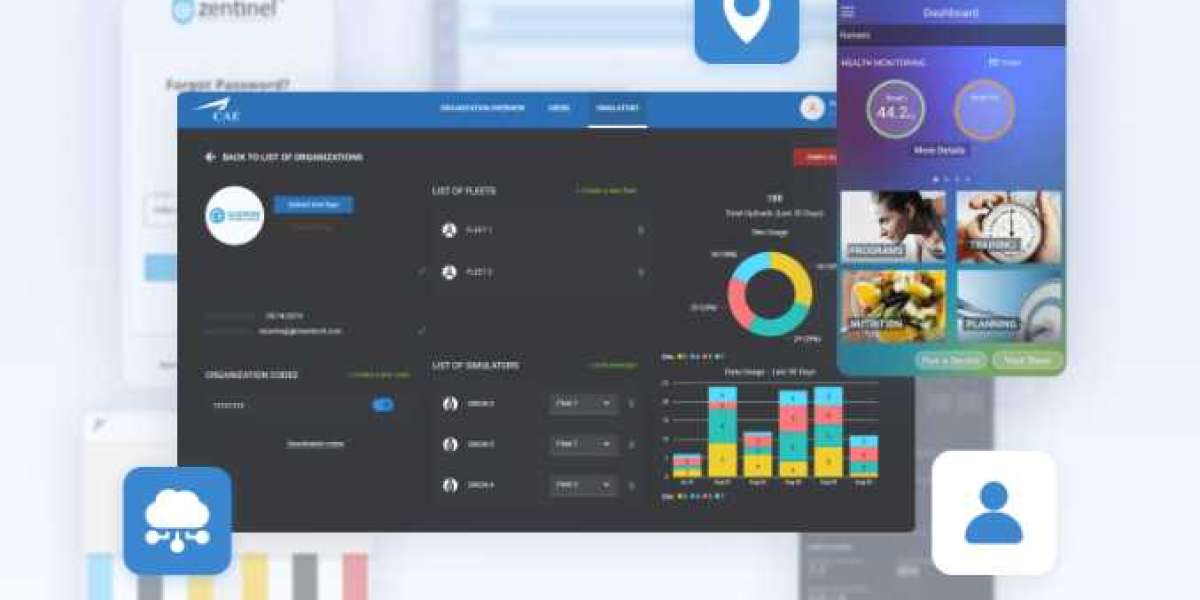In an increasingly digital world, healthcare organizations are evolving to meet the demands of modern patients who expect greater access, transparency, and convenience. One of the key technological solutions that has transformed healthcare delivery is the patient portal. Patient portals are secure online platforms that provide patients with real-time access to their medical information, communication tools to interact with healthcare providers, and various self-service functionalities. The development of these portals has the potential to improve patient engagement, streamline administrative tasks, and ultimately lead to better health outcomes.
This article delves into the concept of patient portal development, the core benefits it brings to both patients and healthcare providers, the essential features of a well-designed portal, the challenges involved in its development, and best practices for creating an effective and user-friendly patient portal.
The Importance of Patient Portals in Modern Healthcare
Patient Empowerment and Engagement
One of the main goals of patient portals is to empower patients by giving them more control over their healthcare. The portal acts as a window into the patient's medical history, providing detailed information about diagnoses, medications, lab results, and more. This level of transparency helps patients better understand their medical conditions and treatments, which is critical for improving patient outcomes.
A patient who has easy access to their medical data is more likely to engage actively with their healthcare provider. They can review test results, monitor their health progress, and identify potential concerns. Studies have shown that patients who are more engaged in their healthcare are better at managing chronic conditions, adhering to prescribed treatment plans, and maintaining preventive care measures.
Enhancing Communication Between Patients and Providers
Another crucial benefit of patient portals is improved communication between healthcare providers and patients. Traditionally, communication occurred through phone calls or in-person appointments, but patient portals offer a convenient, secure messaging platform. This system allows patients to ask questions, clarify instructions, or address concerns without having to schedule a visit, which reduces the administrative burden on healthcare staff and improves response times.
Through secure messaging, healthcare providers can also offer more timely follow-ups, reducing misunderstandings and enhancing patient satisfaction. This is especially important in managing chronic diseases where ongoing communication and timely intervention can be critical.
Streamlining Administrative Processes
From scheduling appointments to paying medical bills, patient portals streamline many administrative processes. Patients can easily schedule, reschedule, or cancel appointments online without needing to call a clinic. This reduces wait times, decreases scheduling errors, and increases overall patient satisfaction. Similarly, patient portals often include billing and payment features, allowing patients to view their medical bills, check insurance claims, and make payments electronically.
Healthcare providers benefit as well, as automating these routine tasks frees up time for medical staff to focus on patient care, thereby improving operational efficiency.
Reducing Hospital Readmissions and Emergency Room Visits
Patient portals can also play a significant role in reducing hospital readmissions and unnecessary emergency room visits. For example, after discharge, patients can receive detailed instructions through the portal on how to manage their recovery, adhere to medication schedules, and monitor symptoms. Healthcare providers can send follow-up messages to check in on patients’ progress or schedule necessary follow-up appointments. This proactive approach helps prevent complications that might otherwise lead to readmission.
Key Features of a Robust Patient Portal
The functionality of a patient portal determines its value to both patients and providers. A well-designed portal must include the following features to meet the needs of modern healthcare systems:
1. Access to Health Records
Providing patients with easy, secure access to their medical records is one of the foundational features of a patient portal. Patients should be able to view their complete health history, including past visits, lab results, diagnoses, immunizations, and medication lists. This transparency allows patients to stay informed and take charge of their health.
2. Appointment Scheduling and Reminders
A seamless appointment scheduling feature is a must-have for any patient portal. Patients should be able to book appointments, select their preferred times, and view available slots. Automated reminders via email or text can help reduce no-show rates, which is a win for both patients and providers. The ability to cancel or reschedule appointments online saves time for both parties.
3. Secure Messaging
Secure communication between patients and healthcare providers is essential. The messaging platform should be HIPAA-compliant, ensuring that patient data is protected at all times. Patients can ask non-urgent medical questions, request medication refills, or clarify post-appointment instructions. Healthcare providers can use this feature to follow up on patient care, respond to inquiries, and provide medical advice without the need for additional appointments.
4. Prescription Refill Requests
Patients should be able to request prescription refills directly through the portal, streamlining the process for both patients and healthcare providers. This feature is particularly valuable for patients with chronic conditions who require regular medication. In some systems, the portal may also provide information on medication side effects, dosage instructions, and potential drug interactions.
5. Online Bill Payment and Financial Information
Incorporating billing and payment functionalities into the patient portal simplifies financial transactions for patients and healthcare providers alike. Patients can view a breakdown of their charges, insurance claims, and outstanding balances, and they can make secure payments online. Offering a transparent view of financial information helps patients better manage healthcare costs.
6. Test Results and Notifications
Receiving test results promptly is a significant benefit for patients. Rather than waiting for a phone call or mailed results, patients can access their test results as soon as they become available. In addition, healthcare providers can provide explanations and next steps through the portal, minimizing patient anxiety and ensuring timely follow-up care.
7. Mobile Accessibility
A mobile-friendly patient portal or a dedicated mobile app is essential in today’s healthcare environment. With the rise of smartphones, patients expect to access their healthcare information on the go. A responsive design ensures that patients can interact with the portal from any device, providing the flexibility they need.
8. Access to Educational Resources
Patient portals can provide access to a wealth of educational resources that help patients better understand their conditions, treatments, and preventive care options. Articles, videos, and tutorials related to health and wellness can empower patients to make informed decisions and maintain healthy lifestyles.
9. Integration with Wearable Devices and Health Trackers
As wearable technology and health tracking devices become more popular, integrating this data into patient portals can enhance the value of the platform. Patients can sync their fitness trackers, heart rate monitors, and other health devices with the portal, giving healthcare providers a more comprehensive view of their patients' health data.
Challenges in Patient Portal Development
Despite the numerous benefits patient portals offer, there are also several challenges that healthcare providers and developers must navigate during the development process.
1. Data Security and Privacy Concerns
One of the biggest concerns in developing a patient portal is ensuring the security and privacy of sensitive health data. HIPAA compliance is non-negotiable, and developers must implement stringent security measures to protect patient information from cyber threats. This includes encrypting data both in transit and at rest, using multi-factor authentication, and conducting regular security audits to identify potential vulnerabilities.
2. Integration with Existing Systems
Many healthcare organizations use electronic health record (EHR) systems, and integrating the patient portal with these existing systems can be complex. Ensuring seamless data flow between the portal and the EHR system is crucial for providing up-to-date and accurate medical information to patients. Developers must work closely with healthcare organizations to ensure proper integration, data synchronization, and interoperability between various healthcare systems.
3. User Adoption and Training
While patient portals offer significant benefits, encouraging patients to adopt the technology can be challenging. Some patients, particularly older adults, may be hesitant to use new digital tools, while others may not fully understand the value of the portal. To overcome this barrier, healthcare providers must invest in patient education and offer support services to help patients navigate the platform. Providing training materials, video tutorials, and customer support can help increase user adoption.
4. Customizability and Scalability
Healthcare organizations vary in size and scope, and their needs can differ significantly. As a result, patient portals must be customizable to meet the specific requirements of each organization. Whether it's integrating with existing EHR systems or providing additional functionalities, flexibility is key to building a successful portal. Additionally, the portal must be scalable to accommodate growing patient bases and evolving healthcare needs.
5. Compliance with Regulatory Requirements
Healthcare regulations are constantly evolving, and patient portals must comply with a range of legal requirements, including HIPAA, GDPR (for international patients), and other data protection laws. Developers need to stay informed about regulatory changes and ensure that the portal is always in compliance with the latest rules and standards.
Best Practices for Developing a Patient Portal
To create an effective patient portal that enhances healthcare delivery and improves patient engagement, healthcare organizations and developers must follow certain best practices throughout the development process.
1. Involve Stakeholders Early in the Process
Successful patient portal development requires input from multiple stakeholders, including patients, healthcare providers, IT staff, and administrators. Involving these stakeholders early in the process ensures that the portal meets the needs of all users and addresses key pain points. Patient feedback, in particular, is invaluable in designing a user-friendly portal that enhances the patient experience.
2. Focus on User Experience (UX)
A user-friendly interface is critical for the success of a patient portal. The platform should be intuitive and easy to navigate for users of all technical abilities. Simplicity in design, clear instructions, and logical workflows ensure that patients can access the information they need without frustration. Additionally, a consistent design across web and mobile platforms enhances the overall experience.








